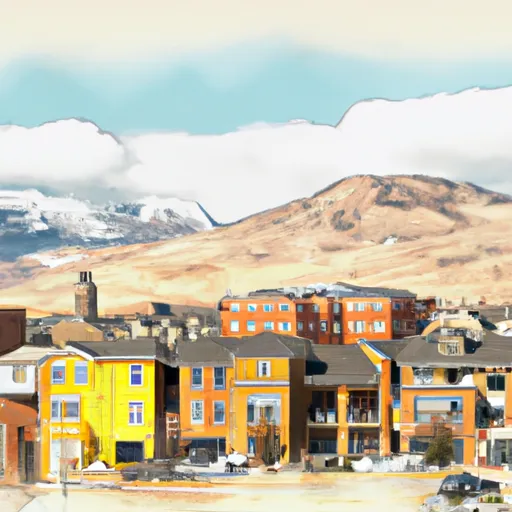-
 Snoflo Premium
Snoflo Premium
Get unlimited access to all our content
With no Ad interruptions! - Start Your Free Trial Login with existing account
Modena
Eden Index
Climate
8.7
•
Recreation
•
Community
•
Safeguard
3.5/10

Modena is a small town located in Iron County, Utah. It is situated in the western part of the state, near the Nevada state line. The town experiences a semi-arid climate, characterized by hot, dry summers and cool winters. Summer temperatures can exceed 90°F (32°C), while winter temperatures occasionally drop below freezing. Precipitation is scarce throughout the year, with the majority of rainfall occurring in the winter months.
In terms of hydrology constituents, the town of Modena does not have any major bodies of water within its immediate vicinity. However, nearby attractions like the Beaver Dam Wash National Conservation Area and Minersville Reservoir offer opportunities for water-based activities such as fishing, boating, and wildlife observation.
Outdoor recreation opportunities in Modena and its surrounding areas are abundant. The region is known for its stunning desert landscapes, offering opportunities for hiking, camping, and off-road exploration. The nearby Dixie National Forest provides opportunities for scenic drives, wildlife viewing, and camping. Additionally, Modena is close to various national parks, including Bryce Canyon National Park and Zion National Park, both within a few hours' drive, offering world-class hiking, climbing, and breathtaking vistas.
What is the Eden Index?
The Snoflo Eden Index serves as a comprehensive rating system for regions, evaluating their desirability through a holistic assessment of climate health, outdoor recreation opportunities, and natural disaster risk, acknowledging the profound impact of these factors on livability and well-being.
Climate Health Indicator (CHI): 8.7
Modena receives approximately
297mm of rain per year,
with humidity levels near 52%
and air temperatures averaging around
10°C.
Modena has a plant hardyness factor of
6, meaning
plants and agriculture in this region thrive during a short period during spring and early summer. Most
plants will die off during the colder winter months.
By considering the ideal temperature range, reliable water supplies, clean air, and stable seasonal rain or snowpacks, the Climate Health Indicator (CHI) underscores the significance of a healthy climate as the foundation for quality living.
A healthy climate is paramount for ensuring a high quality of life and livability in a region, fostering both physical well-being and environmental harmony. This can be characterized by ideal temperatures, reliable access to water supplies, clean air, and consistent seasonal rain or snowpacks.
Weather Forecast
Streamflow Conditions
Escalante Desert-Sevier Lake
Area Rivers
Escalante Desert-Sevier Lake
Snowpack Depths
Escalante Desert-Sevier Lake
Reservoir Storage Capacity
Escalante Desert-Sevier Lake
Groundwater Levels
Recreational Opportunity Index (ROI):
The Recreational Opportunity Index (ROI) recognizes the value of outdoor recreational options, such as parks, hiking trails, camping sites, and fishing spots, while acknowledging that climate plays a pivotal role in ensuring the comfort and consistency of these experiences.
Access to outdoor recreational opportunities, encompassing activities such as parks, hiking, camping, and fishing, is crucial for overall well-being, and the climate plays a pivotal role in enabling and enhancing these experiences, ensuring that individuals can engage in nature-based activities comfortably and consistently.
Camping Areas
| Campground | Campsites | Reservations | Toilets | Showers | Elevation |
|---|---|---|---|---|---|
| Honeycomb Rock | 21 | 5,741 ft | |||
| Beaver Dam State Park | 35 | 5,267 ft |
Nearby Fishing
Nearby Ski Areas
Catastrophe Safeguard Index (CSI):
The Catastrophe Safeguard Index (CSI) recognizes that natural disaster risk, encompassing floods, fires, hurricanes, and tornadoes, can drastically affect safety and the overall appeal of an area.
The level of natural disaster risk in a region significantly affects safety and the overall livability, with climate change amplifying these risks by potentially increasing the frequency and intensity of events like floods, fires, hurricanes, and tornadoes, thereby posing substantial challenges to community resilience and well-being.
Community Resilience Indicator (CRI):
The Community Resilience Indicator (CRI) recognizes that education, healthcare, and socioeconomics are crucial to the well-being of a region. The CRI acknowledges the profound impact of these elements on residents' overall quality of life. By evaluating educational resources, healthcare accessibility, and economic inclusivity, the index captures the essential aspects that contribute to a thriving community, fostering resident satisfaction, equity, and social cohesion.

